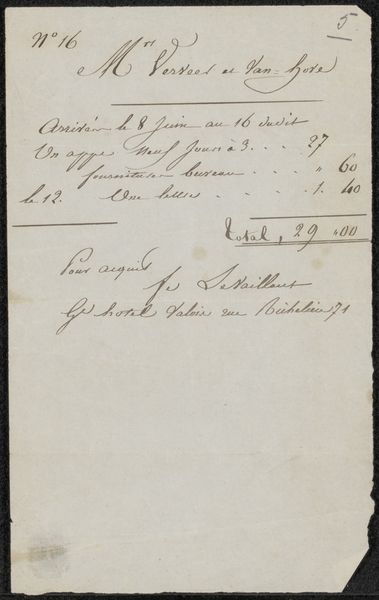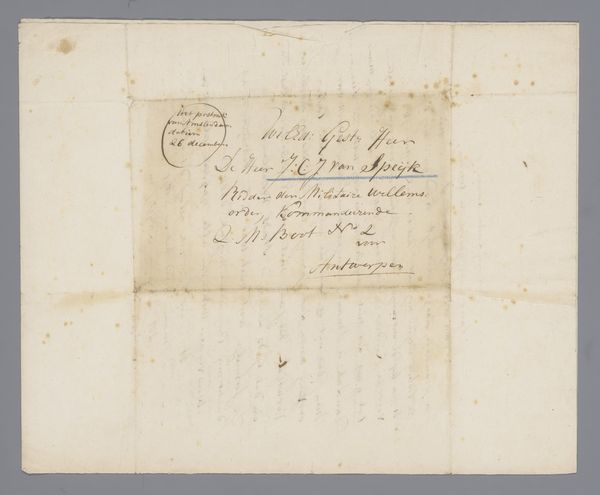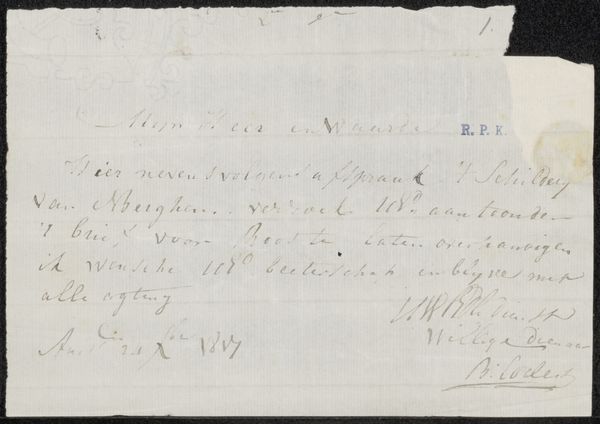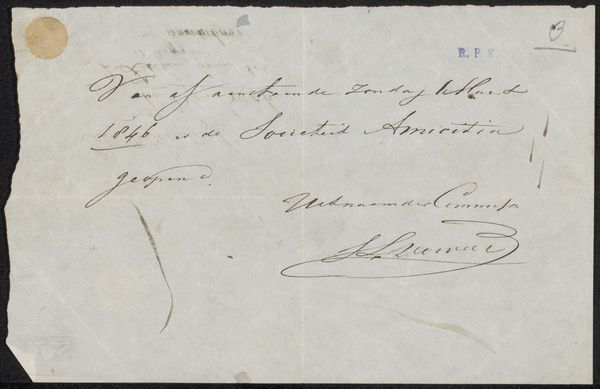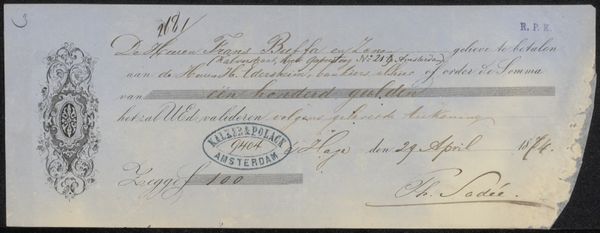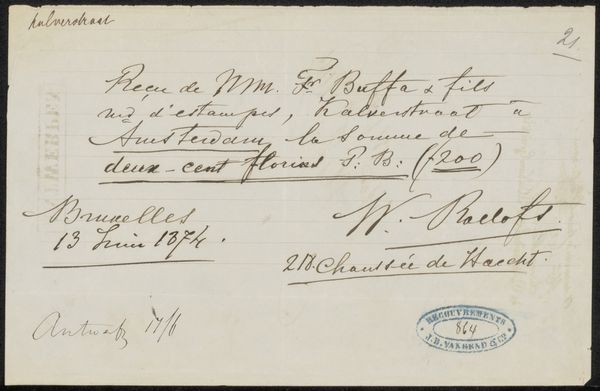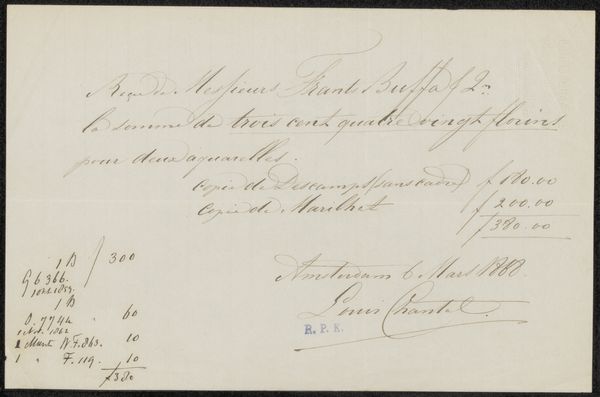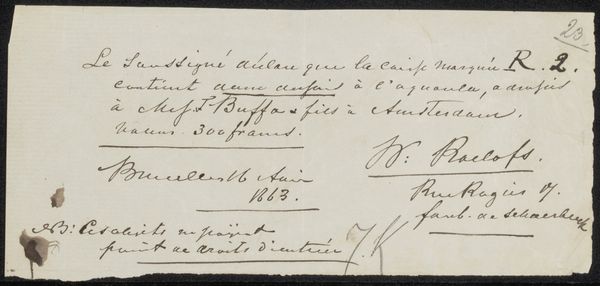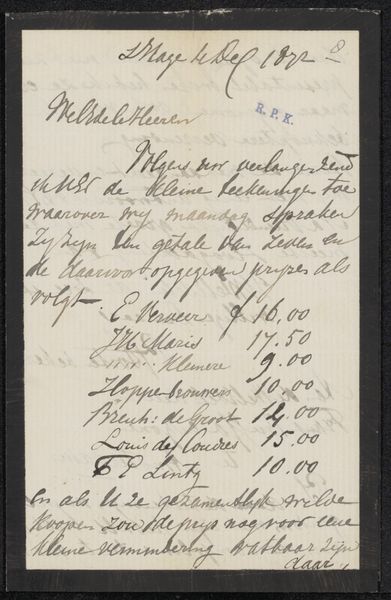
drawing, graphic-art, print, paper, ink, pen
#
drawing
#
graphic-art
#
toned paper
# print
#
pen sketch
#
incomplete sketchy
#
paper
#
personal sketchbook
#
ink
#
ink drawing experimentation
#
pen-ink sketch
#
ink colored
#
pen work
#
sketchbook drawing
#
pen
#
sketchbook art
Copyright: Rijks Museum: Open Domain
Editor: Here we have "Rekening van Cornelis Apostool," possibly from 1883, created with pen, ink, and print on paper. It’s currently held at the Rijksmuseum. My initial reaction is that this feels intensely personal and revealing, like a glimpse into a very specific transaction in the late 19th century. What do you see in this piece? Curator: I see a potent confluence of the personal and the transactional. A receipt, typically a dry, functional object, is transformed into a vehicle carrying echoes of social relationships, and artistic styles through careful penmanship. Look closely. How does the hand-written element strike you, viscerally? Editor: The script is fascinating; elegant yet also pragmatic. It feels very of its time. Curator: Exactly. The script is more than just a record; it is a performance of social expectations. Note how it blends efficiency of accounting with societal presentation in the copperplate style, then consider who might have received the account, and how it positions Roos within the socio-economic structures of the period. Are there any subtle clues within the document? Editor: Well, I see "De Heer Apostool," so Mr. Apostool seems to have some level of social standing, indicated by the formal title, I imagine. It creates a contrast to the humble materiality of paper and ink. Curator: Precisely. The itemisation tells us something of Apostool’s requirements. What else do we read into these symbols of trade, debt and credit, given what this paper represents between citizens and culture? Editor: That's given me so much to think about - how everyday objects can embody so much history. Thank you. Curator: My pleasure! It’s in those everyday survivals where we find the deeper meanings.
Comments
No comments
Be the first to comment and join the conversation on the ultimate creative platform.

